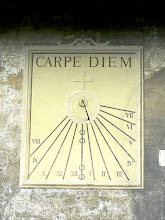FIELD of THE CLOTH OF GOLD, 1520

Painting, 1520:
THE FIELD OF THE CLOTH OF GOLD
______________________________
In the early 16th century, the powers in Europe were France, ruled by Francis I, and the Holy Roman Empire, led by Charles V.
Henry VIII of England needed desperately to forge an alliance with one of the parties.
In 1520, prompted by his chief advisor Cardinal Wolsey, Henry approached Francis I, and the two agreed on a meeting near Calais, between Guines and Ardres.
The young kings, each considered paragons of monarchy in their respective countries, had long been rivals both personally and politically.
Thus, the kings set out to impress and outshine each other, arriving at the meeting with large retinues.
In attempting to outshow the other, the kings spared no expense in their displays of wealth.
They erected pavilions made with cloth of gold (real filaments of gold sewn with silk to make the fabric), organized jousts and other competitions of skill and strength, banqueted each other lavishly, in all ways trying to outdo and outspend one another.
This ostentation earned the meeting the title "Field of the Cloth of Gold."
The feasting ended abruptly when King Henry challenged King Francis to a wrestling match which ended in Francis throwing Henry to the ground and besting him.
The meeting, which had taken place over three weeks (June 7-June 24, 1520) nearly bankrupted the treasuries of France and England, and was useless politically.
Francis and Henry signed no treaty, and a few weeks later Henry signed a treaty of alliance with the Holy Roman Emperor, Charles V.
Within a month, the Emperor declared war on Francis, and England had to follow suit.
==============================
Books for Further Study:
Mee, Charles L., Jr. Playing God: Seven Fateful Moments When Great Men Met To
Change The World. NY: Simon and Schuster, 1993.
Russell, Joycelyne Gledhill. The Field of Cloth of Gold: Men and Manners in 1520.
London: Routledge & Kegan Paul, 1969.
Richardson, Glenn. Renaissance Monarchy: The Reigns of Henry VIII, Francis I,
and Charles V. London: Arnold, 2002.


0 Comments:
Post a Comment
<< Home